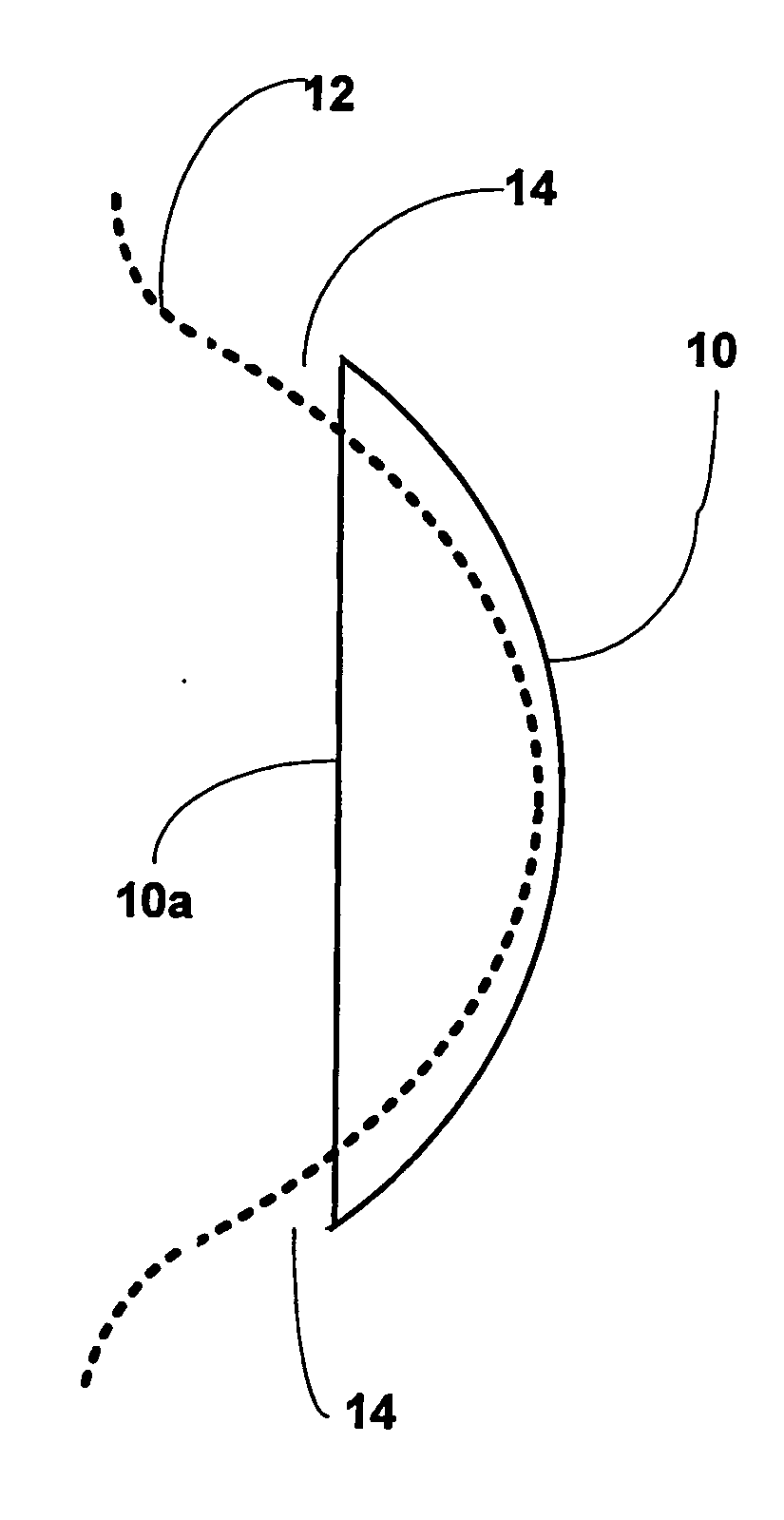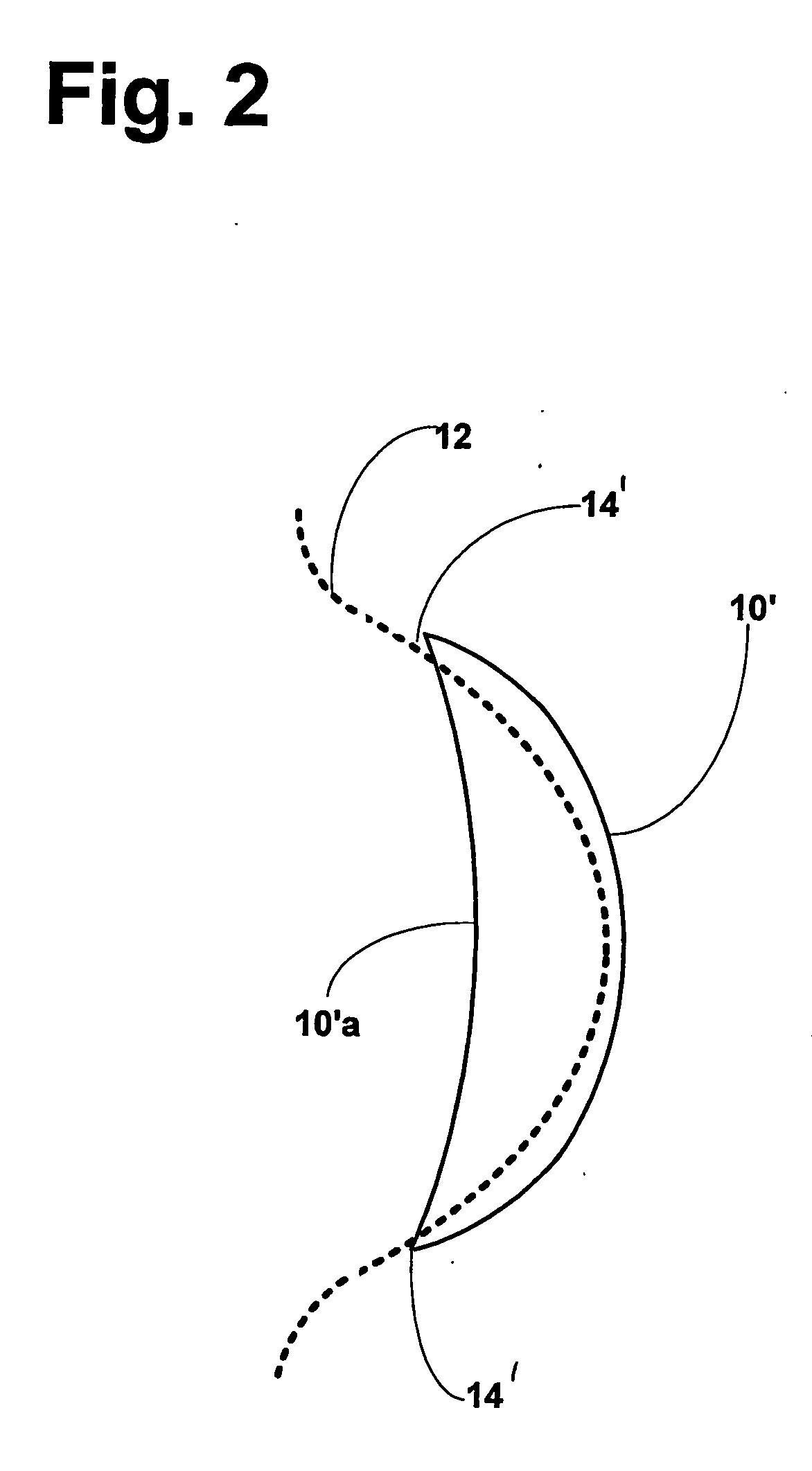Contact lens with shaped periphery
a contact lens and periphery technology, applied in the field of contact lenses, can solve the problems of refractive errors, failure to provide the requisite optical correction, and many patients who currently wear contact lenses are not satisfied with the length of time they can wear their contact lenses and/or the visual acuity their contact lenses provide, so as to reduce the foreign body sensation, improve the comfort of wearing lenses, and improve the effect of blurring
- Summary
- Abstract
- Description
- Claims
- Application Information
AI Technical Summary
Benefits of technology
Problems solved by technology
Method used
Image
Examples
Embodiment Construction
[0028] Referring now to FIG. 1, there is illustrated a side view of a conventional contact lens 10 as worn on the eye 12 of a patient. The periphery 10a of lens 10 is circular and generally lies in a plane. However, the cornea is asymmetric and aspheric, and it is flatter in its lateral dimension than its vertical dimension. Accordingly, there are spaces 14 (shown exaggerated) between the edge of the lens and the eye at the top and bottom. As a result of these spaces, lens 10 tends to rock vertically when subjected to the movement of the eyelids. Lens movement causes irritation of the eye and, therefore, discomfort to the wearer.
[0029] As illustrated in FIG. 2, in accordance with the present invention, the peripheral shape of lens 10 is modified so its edges are drawn closer to the eye in the region of spaces 14, 14 resulting in lens 10′. In effect, the distance or depth of the edge of the 10 lens from a plane tangent to the apex of the eye is increased in the region of spaces 14, ...
PUM
 Login to View More
Login to View More Abstract
Description
Claims
Application Information
 Login to View More
Login to View More - R&D
- Intellectual Property
- Life Sciences
- Materials
- Tech Scout
- Unparalleled Data Quality
- Higher Quality Content
- 60% Fewer Hallucinations
Browse by: Latest US Patents, China's latest patents, Technical Efficacy Thesaurus, Application Domain, Technology Topic, Popular Technical Reports.
© 2025 PatSnap. All rights reserved.Legal|Privacy policy|Modern Slavery Act Transparency Statement|Sitemap|About US| Contact US: help@patsnap.com



